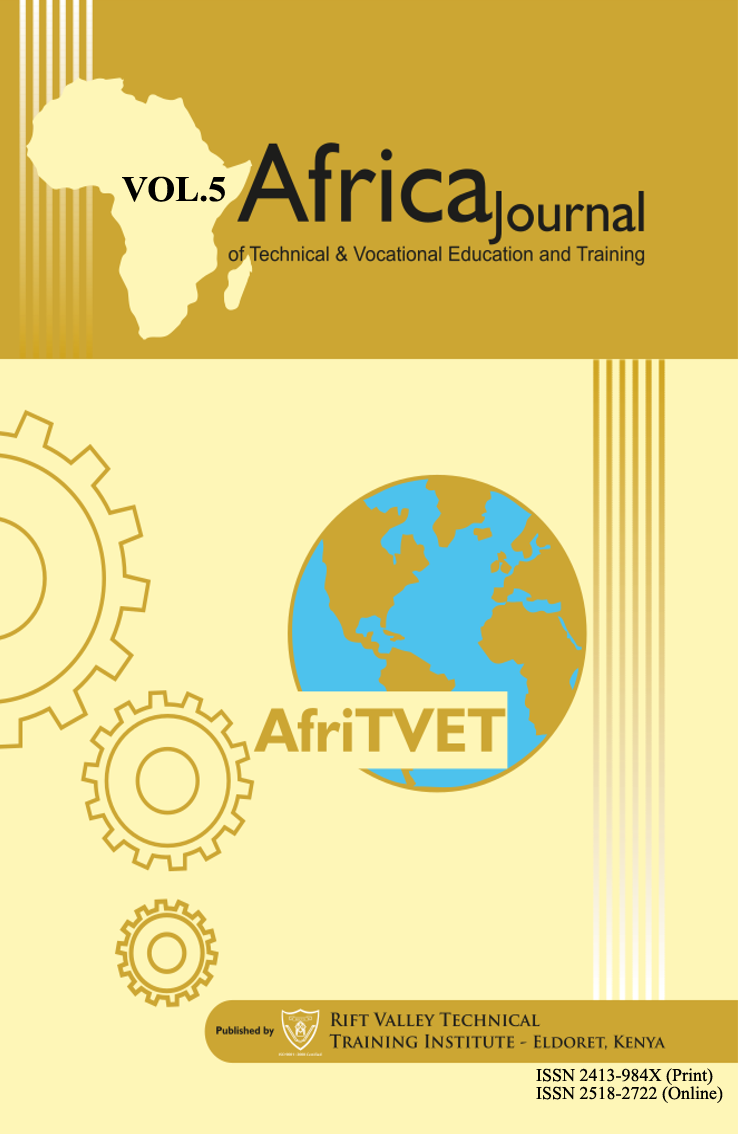Effective Methods for Community Sanitation and Hygiene Promotion in the Developing World: A Scoping Review
Abstract
World Health Organization data on the burden of disease shows that approximately 3.1% of deaths (1.7 million) and 3.7% (54.2 million) of disability-adjusted-life-years (DALYs) worldwide are attributable to unsafe water, sanitation and hygiene. In Africa and developing countries in South East Asia 4 - 8% of all disease burdens are attributable to poor hygiene and sanitation. Over 99.8% of all deaths in developing world are attributable to the same factors and 90% are deaths of children under five years. Studies have shown that more than 2 billion people lack access to adequate sanitation and hygiene and increased access to sanitation and better hygienic practices have significant positive health and other impacts. The aim of this study was to search, document and provide a synthesis of effective methods used in promoting hygiene and sanitation in communities across the developing world. This was a scoping review. A total of 42 evaluation surveys were reviewed. Data was collected from 8 out of 42 papers which met the inclusion criteria to be considered into the dataset. Results indicated that social mobilization and community participation methods which include; Community Led Total Sanitation (CLTS), Participatory Hygiene and Sanitation Transformation (PHAST) are effective methods in promoting community hygiene and sanitation. Though Children’s Hygiene and Sanitation Training (CHAST) and Sanitation marketing have been implemented to improve hygiene and sanitation, currently no evaluation studies have been conducted to evaluate effectiveness of these approaches. To achieve access to adequate sanitation and hygiene for all, and to end open defecation and reduce burden of diarrheal diseases by the year 2030 (Target 6.2 of the Sustainable Development Goals), governments and development agencies working in the developing world need to fast track adoption and scaling up of CLTS and PHAST. CHAST and sanitation marketing strategies should also be embraced because they are grounded on sound scientific principles and have potential to improve hygiene and sanitation. However, there is need to carry out evaluation surveys to measure their effectiveness in improving sanitation and hygiene in the developing world.
Article Views and Downloands Counter
References
Berkman, N. D., Lohr K. N., Ansari, M., McDonagh, M., Balk, E., Whitlock, E, … Chang, S. (2013). Grading the Strength of a Body of Evidence When Assessing Health Care Interventions for the Effectiveness. Rockville: Agency for Healthcare Research and Quality. Retrieved from https://www.ncbi.nlm.nih.gov/books/NBK174881/pdf/Bookshelf_NBK174881. pdf
CARITAS. (2004). Children’s hygiene and sanitation training (CHAST). Hargesia: CARITAS. etrieved from https://sswm.info/sites/default/files/ reference_ attachments/ BOCKHORN VONDERBANK 2004 CHAST Practical Guide.pdf
Crocker, J., Saywell, D., & Bartram, J. (2017). Sustainability of community-led total sanitation outcomes: Evidence from Ethiopia and Ghana. International Journal of Hygiene and Environmental Health, 220, 551–557. https://doi.org/10.1016/j.ijheh. 2017.02.011
Devine, J., & Kullmann, C. (2011). Introductory guide to sanitation marketing WSP scaling up rural sanitation. Geneva: Water and Sanitation Program (WSP). Retrieved from http://documents.worldbank.org/curated/en/629041468152091333/pdf/724050WP0WSP0R09011020120Box371917B.pdf
Dumba R, Kaddu, J. B. & Wabwire-Mangen, F. (2013). Design and implementation of participatory hygiene and sanitation transformation (PHAST) as a strategy to control soil-transmitted helminth infections in Luweero, Uganda. African Health Sciences, 13(2), 512–517. https://doi.org/10.4314/ahs.v13i2.44
Carlton, E. J., Liang, S., McDowell, J. Z., Li, H., Luoe, W., & Remaisc, J. V. (2012). Regional disparities in the burden of disease attributable to unsafe water and poor sanitation in China. World Health Organization Bulletin , 90(1), 578–587. Retrieved from https://www.ncbi.nlm.nih.gov/pmc/articles/PMC3417791/ pdf/BLT.11.098343.pdf
de Vreede, E. (2005). Children’s hygiene and sanitation training in Somalia. Waterlines , 23(5). Retrieved from https://www.ircwash.org/sites/default/files/Vreede-2005-Childrens.pdf
lzua, M. L., Djebbari, H., Lopez, C., Cardenas, J. C., Lopera, M. A., Osbert, N., & Coulibaly, M. (2015). Final report: Impact evaluation of community-led total sanitation (CLTS) in rural Mali. GENEVA: UNICEF. Retrieved from https://www.unicef.org/evaldatabase/ files/CLTS_impact_eval_Mali_final_report. pdf
Pham, M. T., Rajić, A., Greig, J. D., Sargeant, J. M., Papadopoulos, A., & Mcewen, S. A. (2014). A scoping review of scoping reviews: advancing the approach and enhancing the consistency. https://doi.org/10.1002/jrsm.1123
Tessema, R. A. (2017). Assessment of the implementation of community-led total sanitation, hygiene, and associated factors in Diretiyara district, Eastern Ethiopia. PLOS One, 12(4). Retrieved from https://journals.plos.org/plosone/ article/file?id=10.1371/journal.pone.0175233&type= printable
Budhathoki, S. S., Bhattachan, M., Castro-Sánchez, E., Sagtani, R. A., Rayamajhi, R. B., Rai1, P. & Sharma, G. (2018). Menstrual hygiene management among women and adolescent girls in the aftermath of the earthquake in Nepal. BMC Womens Health, 18(33). Retrieved from https://bmcwomenshealth.biomedcentral.com/track/pdf/ 10.1186/s12905-018-0527-y
UNICEF. (2013). UNICEF Sanitation Marketing Learning. Geneva : UNICEF. Retrieved fromhttps://www.unicef.org/wash/files/Guidance_Note_6__Enabling_Environment.pdf
UNICEF, Government of Kenya, International Water and Sanitation Centre, NETWAS International, & IRC. (2009). Report of the Evaluation of the PHAST tool for the promotion hygiene & sanitation in the GOK/UNICEF programme of cooperation.UNICEF. Retrieved from https://www.unicef.org/evaldatabase/files/ Kenya_2009-008_-_PHAST_Evaluation _Report_final-.pdf
Venkataramanan, V., Crocker, J., Fuente, D., Bartram, J., Gnilo, M., Harvey, E., … Yamakoshi, B. (2017). Review of Rural Sanitation Approaches Final Report With contributions from: Mulugeta Balecha. The Water Institute. Retrieved from http://www.waterinstitute.unc.edu
Venkataramanan, V., Crocker, J., Karon, A., & Bartram, J. (2018). Community-Led Total Sanitation: A Mixed-Methods Systematic Review of Evidence and Its Quality. Environmental Health Perspectives. Retrieved from https://www.ncbi.nlm.nih.gov/ pmc/articles/PMC6066338/pdf/EHP1965.pdf
Water AID. (2007). An Evaluation of the WaterAid ’ s CLTS Programme in Nigeria. Lagos: Water AID.
World Bank. (2005). State of the Art” Hygiene and Sanitation Promotion Component Design of Large-Scale Rural Water Supply and Sanitation Programs – Hygiene Promotion: Evidence and Practice. Washington DC: World Bank. Retrieved from http://siteresources.worldbank.org/INTESSDBNWP/Resources/HP_Evidence_and_Practice_update_rev2_web_version.pdf
World Health Organization. (2000). Participatory Hygiene and Sanitation Transformation. Geneva: World Health Organization. Retrieved from https://www.who.int/water_ sanitation_health/hygiene/envsan/EOS96-11a.pdf
World Health Organization & United Nations Children’s Fund. (2017). Progress on Drinking Water, Sanitation and Hygiene: Update and SDG Baselines 2017. Geneva. Retrieved from https://www.unicef.org/publications/files/ Progress_on_Drinking_ Water_Sanitation_and_Hygiene_2017.pdf
Munn, Z, Peters, M. D. J., Stern, C., Tufanaru, C., McArthur, A., & Aromataris E. (2018). Systematic review or scoping review? Guidance for authors when choosing between a systematic or scoping review approach. BMC Medical Research Methodology, 18(143). Retrieved from https://bmcmedresmethodol.biomedcentral.com/track/pdf/10.1186 /s12874-018-0611-x
Copyright (c) 2020 Africa Journal of Technical and Vocational Education and Training

This work is licensed under a Creative Commons Attribution-NonCommercial-ShareAlike 4.0 International License.
Copyright Notice Copyright of published articles is held by AfriTVET. No limitation will be placed on the personal freedom of authors to copy or to use in subsequent work, material contained in their papers. Please contact the Publisher for clarification if you are unsure of the use of copyright material. Apart from fair dealing for the purposes of research and private study, or criticism and or review, this publication may only be reproduced, stored or transmitted, in any form or by any means, with the prior permission in writing of the Publishers.


